-
Short Selling the Statistical Life by C. H. Irons
The concept of putting a price tag on a human life is an uncomfortable thought, but it is a thing that exists for statistical purposes. From my understanding mostly to help with cost/benefit analysis on for example construction work that will increase road safety. In this story the statistical life value is a bit more sinister, as it is a traded commodity on the stock market, and thus subject to manipulation and short selling.
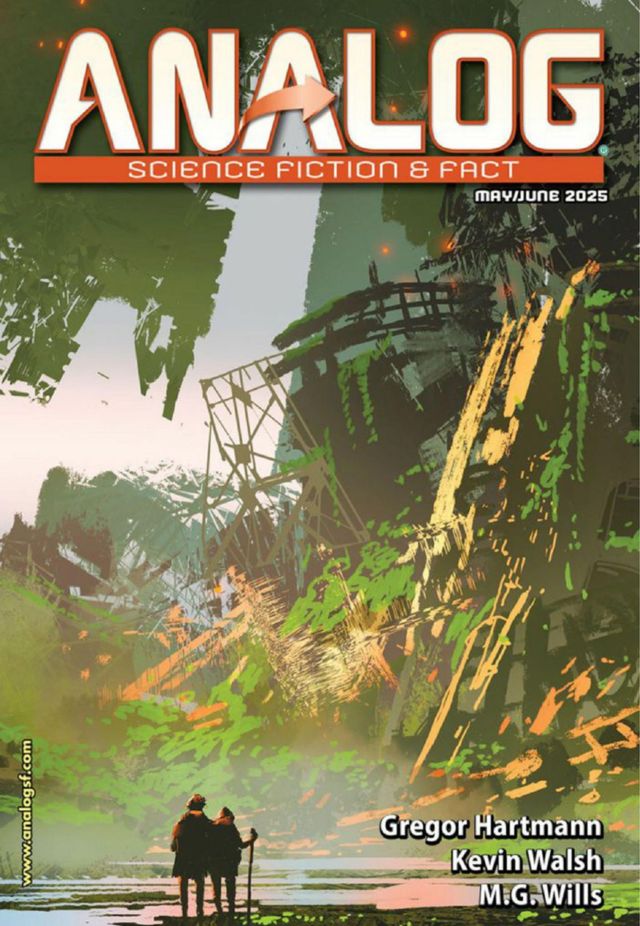
The story follows a healthcare worker who is contacted by mysterious people that claim to have a way to predictable predict future developments of the stock market evaluation of the statistical life index. They use that information to “short” the index and use the money to help underfunded hospitals. In their own words, they take advantage of the horrible market manipulation system to do some good instead. Our protagonist is sceptical at first to be in on this scheme, but goes through it with it.
This basic plot is mostly there to serve the world building for this dystopic future where the statistical life index is used to suppress workers. While I do like the idea behind this premise, I think it is less successful as a story. We don’t really get a proper understanding of what this statistical life concept does to regular people or society in general, only that the healthcare sector is underfunded, but you don’t need a science fiction story to write about that issue. I also miss some sort of more detailed explanation of why the index would go up or down. I can accept the vague reasons for why they have a solid way of predicting future market fluctuations, but there still need a real world event or reason to give perspective to why the index should suddenly crash hard. In that sense, the story come up short.
Read in Analog May/June 2025
Rating: 2 -
Quantum Ghosts by Nancy Kress
In this long novella published in two parts in the last two issues of Asimov’s, Nancy Kress tells a very action-packed futuristic exciting story with plenty of cool concepts and ideas. It is a future with sort of a next-level AI internet where people interface with it through a brain implant and some have even managed to upload themselves to a digital afterlife, in a cloud setup with no communication to the world of the living. Though all of that is threatened by a recent increase in solar activity.

We follow young Kenda and her 5 year old sister as they are struggling to survive, and are forced to move into an especially bad part of the city in an apartment with frequent “ghost” appearances. As in electromagnetic disturbances from the nearby upload center for the rich dead people that messes with people chip implants. The story also follows Robert who is running for governor, and his daughter Hailey is seeking to get her chip removed as there is a growing sceptical movement on the effects and safety of the implants. The storylines converge in one big plot heavy action adventure.
There is clearly a lot going on in this story, but Kress writes well making the narrative easy and engaging to follow. It is very cinematic in the sense that it feels like scenes playing, with a long string of chapter cliffhangers, foreshadowing and dramatic plot points. While I must admit it makes for an entertaining read, it was also somewhat jarring. Like simply too much, and while Kress have always written stories filled with advanced tech and a dramatic narrative, this jumps the shark in some places and felt almost pulpy.
The story isn’t without some thematic depth though. The whole catastrophic situation it builds up to functions as a reasonable metaphor for how we are dealing with the current threat of climate change. As well as AI for that matter. While all of that is good, I just know that Kress is capable of unpacking such themes with more depth, as the interesting concepts presented here almost drowns in the action movie plot.
Read in Asimov’s March/April & May/June 2025
Rating: 3 -
Not Optimus Prime by Lorraine Alden
Stories about math are always interesting to me, and this short story has a cool premise with a researcher working on calculating very big prime numbers (in the 200 million digits range), where she find something unusual.
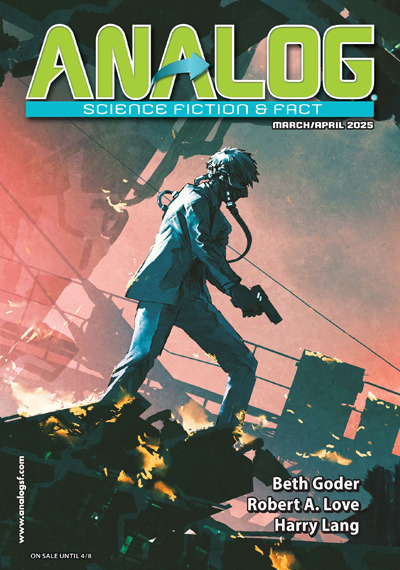
Vera is using an expensive quantum computer to calculate the biggest prime number found so far. While the calculation is running she chats with a tech working in the lab, and when the calculation successfully finds a new prime number; strange things starts happening with her computer.
This story reminded me of Dark Integers by Greg Egan and I am sure it has been an inspiration for the author, as Vera in the story is reading an Egan novel. I like how that is included.
Sadly however, the story more or less fell apart for me with its ending. Without revealing too much, the story takes a rather violent turn that I didn’t think were really warranted with the very sparse character development that was established, and it doesn’t really make the whole prime number mystery more interesting. It just adds more action that is completely unnecessary. The discovery was exciting enough on its own.
Read in Analog March/April 2025
Rating: 2 -
Earthgate by J. Brian Clarke
This novelette of space exploration reminded me quite a bit of the Heechee-stories by Frederik Pohl. Many planets are connected through a vast network of jumpgates built by a now long gone unknown species, but for some reason humans and another race called the Phuili are not connected. Gia sets out to find uncover the mystery accompanied by a Phuili.
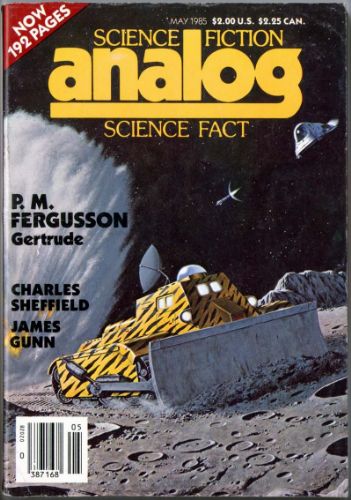
The general premise here isn’t a bad one as it has that aura of ancient alien technology that I never quite get tired of. However this story doesn’t do much more than provide the mystery of the jumpgates and while the conclusion is actually a nice one, it does show that the story is part of a series. There was a lot of filler that I didn’t think added much to this particular story, but would give a broader world-building or characterization.
Read in The 1986 Annual World’s Best SF, edited by Donald A. Wolheim
Originally published in Analog Science Fiction/Science Fact, May 1985
Rating: 2 -
Shadow of Shadows by Frank Ward
This story dives into the multiple worlds theory and quantum mechanics, but its flavor is more of a personal drama than theoretical physics speculation. We follow a physicists trying to test his theory while dealing with his less than enthusiastic students, but it is his tragic past that in an unexpected manner that end up moving him forward.

This well written story got me hooked very quickly. I was impressed with how quickly we get to understand, and feel, where the main character Sebastian is in his professional and personal life. His past gets naturally and gradually revealed, and the narrative is engaging even though it isn’t a story filled with conflict or drama.
The multiple worlds theory has been explored countless times in science fiction, and the scope of these types of stories can get quite wide, but Frank Ward keeps in close and personal which I really appreciated.
Read in Asimov’s January/February 2025
Rating: 4 -
Grace's Family by James Patrick Kelly
This is a story that is more about world building than plot. In the hands of someone like Kelly, that is a good thing. Set on an interstellar starship on a mission of exploration, we follow a young man and how he deals with the arrival of some new crew members.
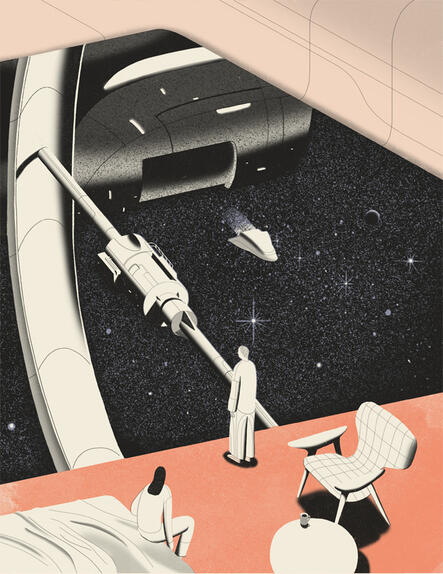
What I like about this story is how Kelly builds this little microcosmos and make it feel real. The information about the ship and its crew comes naturally, where their purpose of gathering information, not data - there is a specific point to the difference, is not fully explained, but it allows for some musings on humans place in the universe and the role of artificial intelligences.
And it is also a nice coming of age sort of story on top of that. Though given the title of the story, where Grace is the name of the ship, makes it actually more about her than the young protagonist.
Read in Forever Magazine, February 2025
Read online at Tor.com
Rating: 4 -
What the Frog's Eye Tells the Frog's Brain by Beston Barnett
A handful of scientists are being held captive in a locked room with only some soylent “food” to keep them alive and some books to pass the time. Apparently an AI of sorts is ruining weird experiments on them like they were labrats.

Of course they try to find a way to escape, which involves some interesting oddities of Linux. While that aspect of the story was sort of amusing, as a whole the story felt a bit pointless. These people are thrown in a terrible situation, but we know too little about them or what is going on to really care about what is happening.
Read in Asimov’s January/February 2025
Rating: 2 -
Upgrade by Mark W. Tiedemann
We have offloaded work to machines for a long time and it has allowed us to focus more on where the human input matter more. But is there a limit to what mental tasks we can offload to a computer and what will that mean for ourselves? Mark W. Tiedemann explores those dilemmas in this little short story.
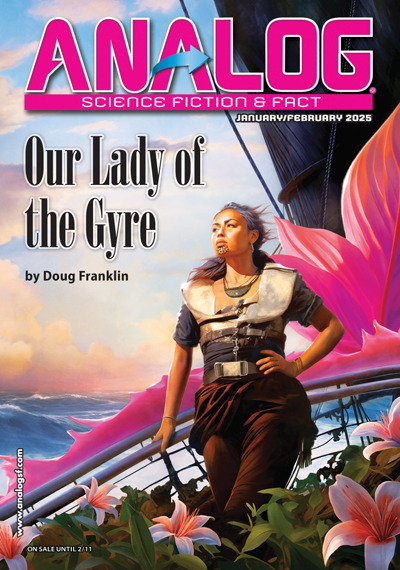
The story follows a rather successful lawyer who despite his good reputation feels like he need to get an neurological implant in order to keep up. It is best described as a thing resembling an AI agent that is linked directly to the brain where it will offload what is described as “routine tasks”. The lawyer can see the benefits and it has clearly improved productivity immensely for his coworkers that have the same implant, but he is also worried what it will do to his own free will and critical thinking.
The analogy to current AI models are pretty obvious, but using it in a story like this in a corporate environment makes for an interesting angle to comment on these issues. If everyone is offloading some mental tasks to a machine, how will that form society int he long run? It is an open ended story that is more or less only premise and little to no dramatic narrative, but it definitely got me thinking.
Read in Analog January/February 2025
Rating: 3+ -
The Temporary Murder of Thomas Monroe by Tia Tashiro
This techno-murder-mystery-thriller hits the ground running with a cool premise of a young man being reawakened after his murder, and the story basically unravels his memory loss of what lead to that event.

We establish from the first paragraphs that Jay is the murderer and Thomas is the victim. Thomas has rich parents so he can be revived with fancy technology. The story works its way backwards so we gradually get to learn about both Jay and Thomas, and how they are connected.
Besides a just generally well structured thriller reveal plot type story, I found Thomas’ story to be both compelling and tragic. We learn about how his parents misguided ambitions for him robs him of personal freedom and relationships.
The truth about the murder is an interesting turn of events and I think it could make a pretty good movie.
Read in Clarkesworld January 2025
Rating: 3+ -
Prince of Spirals by Sean McMullen
McMullen is always worth reading in my opinion and this entertaining story builds up a very unique premise that I haven’t seen in science fiction, dealing with DNA archaeology and an unresolved mystery involving the Plantagenets.

Dr. Angelo Maslini becomes the unfortunate victim of a kidnapping by a group people who claim to ascendants of the Plantagenets, and they want to secure proof of that. Problem is that the bones of the sons of Edward IV is lying in a tomb in Westminster Abbey. They enter the tomb with a remote controlled robot and have it bring back samples for Angelo to analyze.
That is pretty much the story, and it is filled with interesting tidbits about DNA analysis and small historic lessons. I am sure readers interested in that mystery of what really happened to the two sons will have a great time with this story, though even without it I had a pretty good time reading this entertaining story. Sean McMullen keeps the pace consistent throughout with some cool twists and reveals along the way.
Read in Analog January/February 2025
Rating: 3+
- •
- 1
- 2